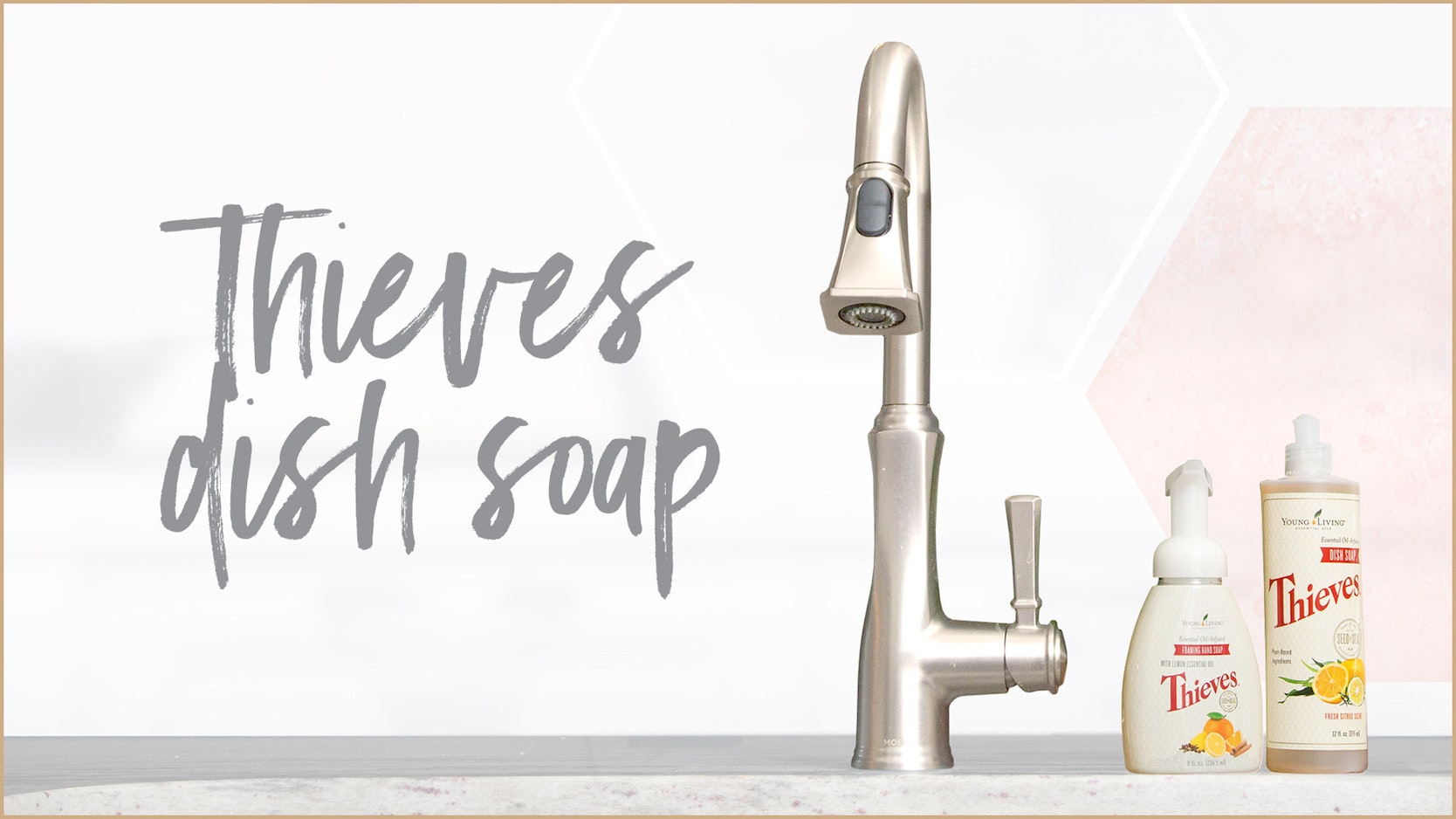Thieves Dish Soap

Ready to make the switch for the safety of your skin and eating surfaces? We love our Thieves Dish Soap!
INGREDIENTS
- Decyl glucoside: Comparable to the other Alkyl Polyglucoside Surfactants, decyl glucoside is obtained from 100% renewable vegetable origin. The Cosmetic Ingredient Review (CIR) Expert Panel assessed the safety of 19 alkyl glucosides including decyl glucoside as used in cosmetics and concluded that these ingredients are safe in the present practices of use and concentration when formulated, and are non irritating. Since glucoside hydrolases in human skin are likely to break down these ingredients to release their respective fatty acids and glucose, the Panel also reviewed CIR reports on the safety of fatty alcohols and were able to extrapolate data from those previous reports to support safety. Decyl glucoside is a gentle cleanser delicate enough even for the delicate skin on fruits, such as berries and cherry tomatoes, which is why it is used in Fruit & Veggie Sprays also.
- Sodium lauroyl lactylate: A salt derived from the lauric acid ester of lactyl lactate (or milk and coconut oil), and is traditionally used as a food emulsifier, although it is seen in cosmetics and personal care products because of its ability, as a lactylate, to penetrate skin easily, providing “residual moisturization, extended fragrance release, and enhanced delivery of actives. Lauric acid is known for its moisturizing abilities, and is also recognized as an acne-fighter thanks to its antimicrobial properties. Sodium Lauroyl Lactylate is used as an ingredient in shampoos, face and body washes, and other foaming cleansers.
- Lauryl glucoside and caprylyl glucoside: a safer alternative to regular harsh sulfates, which are typically used in cleansers to make the formula foam up. Also a “surfactant (cleanser),” this one is formed in the lab by blending a mixture of alcohols with some simple sugars. The raw materials come from vegetables or coconut, and the resulting ingredient has a “zero” hazard rating on the Skin Deep Database.
- Sodium oleate: I honestly had a difficult time finding information on this one that was not extremely scientific and technical and mixed with other ingredients. EWG rates it very low and lists 18 studies showing it to be of low concern on several fronts like estrogenic and mutagenic effects.
- Sodium sesquicarbonate: An A rating on EWG, this ingredient is a double salt of sodium bicarbonate and sodium carbonate, and has a needle-like crystal structure. However, the term is also applied to an equimolar mixture of those two salts, with whatever water of hydration the sodium carbonate includes, supplied as a powder.
My favorite aspect of every Young Living product is that instead of the vague “fragrance” that they don't even have to disclose to us, we know that we have the most amazing, cleansing, pure essential oil scents which also have health benefits.
Have you made the swap?
TESTIMONIES
- “Thieves Dish soap is all I use for our house!!! Ditched Dawn for this! Love using it on our baby bottles.”
- “Thieves is the only dish soap I use. I ditched a popular dish soap brand because it left my hands dry and cracked to the point of bleeding. This does the opposite!”
- “Thieves dish soap keeps my hands soft and works great for us.”
- “I love thieves dish soap! So many uses for one product. So glad I made the switch to a toxin free product!”
- “I love my thieves dish soap! No worries about any chemical residue to harm my family!”
- “I only use Thieves dish soap. Prior to that I used whatever quasi-“safe” options the store had..YUCK!”
- “I hand wash my dishes everyday. I love how gentle it is on my skin as well as how great it is at cleaning all my gunky dishes!”
- “I use this dish soap in all of my clothes stain sticks!”
- “I of course love the Thieves dish soap for my dishes, but I also use it to get stains out of my clothes. Works like a charm!”
Related Links
Tap on a link to view it.